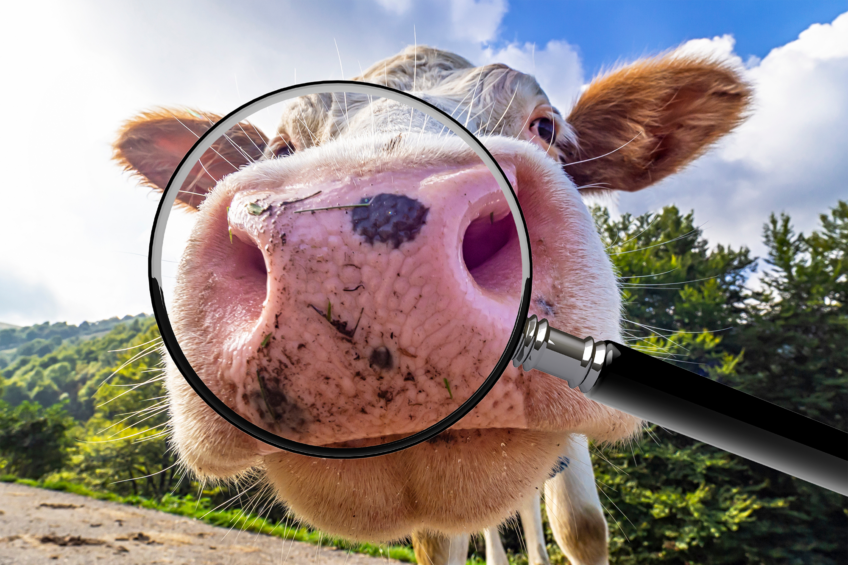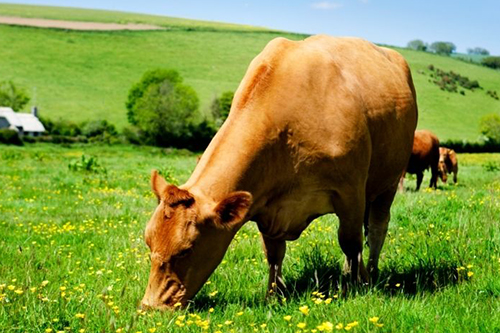Effects of feeding and visiting behaviour on emissions of dairy cattle

Feeding and visiting behaviour are vital when assessing the effects of dietary treatment on the production of methane (CH4) and hydrogen (H2 ) emissions, is shown in a recent study of Wageningen University.
Scientists from Wageningen Livestock Research in the Netherlands investigated the effect of feeding and visiting behaviour of dairy cattle on CH4 and H2 production measured with voluntary visits to the GreenFeed system (GF) and to determine whether these effects depended on basal diet (BD) and 3-nitrooxypropanol (3-NOP) supplementation.

GreenFeed is a turn-key system designed to measure gas fluxes of methane, carbon dioxide, hydrogen and oxygen from individual animals. The system is typically configures to offer a small amount of pelleted bait attractant to entice the animals to visit multiple times per day. The gas emissions data is then logged and processed allowing the user to easily access data of calculated fluxes.
Methodology
The experiment involved 64 lactating dairy cattle (146 ± 45 DIM at the start of trial; mean ± SD) in 2 overlapping crossover trials, each consisting of 2 measurement periods.
Cows within block were randomly allocated to 1 of 3 types of BD:
- a grass silage-based diet consisting of 30% concentrates and 70% grass silage (DM basis);
- a grass silage and corn silage mixed diet consisting of 30% concentrates, 42% grass silage, and 28% corn silage (DM basis);
- or a corn silage-based diet consisting of 30% concentrates, 14% grass silage, and 56% corn silage (DM basis).
Each type of BD was subsequently supplemented with 0 and 60 mg 3-NOP/kg of DM in one crossover or 0 and 80 mg 3-NOP/kg of DM in the other crossover. Diets were provided in feed bins that automatically recorded feed intake and feeding behaviour, with additional concentrate fed in the GF. All visits to the GF that resulted in a spot measurement of both CH4 and H2 emission were analysed in relation to feeding behaviour (e.g., meal size and time interval to preceding meal) as well as GF visiting behaviour (e.g., duration of visit).
Feeding and GF visiting behaviour were related to CH4 and H2 production measured with the GF, in particular the meal size before a GF measurement and the time interval between a GF measurement and the preceding meal. Relationships between gas production and both feeding and GF visiting behaviour were affected by type of BD as well as 3-NOP supplementation.
Results
With an increase of the time interval between a GF measurement and the preceding meal, CH4 production decreased with 0 mg 3-NOP/kg of DM but increased with 60 and 80 mg 3-NOP/kg of DM, whereas type of BD did not affect these relationships.
In contrast, CH4 production increased with 0 mg 3-NOP/kg of DM but decreased with 60 and 80 mg 3-NOP/kg of DM upon an increase in the size of the meal preceding a GF measurement. With an increase of the time interval between a GF measurement and the preceding meal, or with a decrease of the size of the meal preceding a GF measurement, H2 production decreased for all treatments, although the effect was generally somewhat stronger for 60 and 80 mg 3-NOP/kg of DM than for 0 mg 3-NOP/kg of DM.
Summary
In conclusion, the timing of GF measurements next to feeding and GF visiting behaviour are essential when assessing the effect of dietary treatment on the production of CH4 and H2 in a setting where a spot-sampling device such as a GF is used and where the measurements depend on voluntary visits from the cows.
The study can be found in the October edition of the Journal of Dairy Sciences: The effect of feeding and visiting behaviour on methane and hydrogen emissions of dairy cattle measured with the GreenFeed system under different dietary conditions – ScienceDirect











